
9 minute read
Taming Ocean Beach
By Arnold Woods
Coastal communities deal with an ageold problem: parks, residences, and infrastructures with ocean views are wonderful to have, but often difficult or treacherous to maintain. As San Franciscans increasingly came west to Ocean Beach to live or play, it did not take long for the city to see a need to protect oceanside property and the ocean road. Solving the issue would be an extended and fitful process.
Advertisement
There had long been a horse road extending from the north end of Ocean Beach down to today’s Sloat Boulevard. Initially known as Ocean Boulevard, it was largely a sandy road framed by the Cliff House on one end and the Oceanside House (later Tait’s at the Beach) at the other. By the mid-1890s, the city was improving the road with a foundation of rough stone all the way from the Cliff House south to Lake Merced. The road started being referred to as Great Highway, though when the name was officially changed is unclear.
With the increasing popularity of automobiles after the turn of the 20th century, San Francisco was keen to create both a better road and an attractive destination along the beach. The city wanted a beautiful esplanade that ran the full length of Ocean Beach. Such a large project would require considerable expense, and the city did not want to issue bonds for the work.
Therefore, the Board of Supervisors unanimously approved a resolution on February 15, 1915 to do the work “one section at a time.”1 This decision would have consequences as the work progressed.
On May 3, 1915, the Board of Supervisors appropriated $50,000 to begin work on the first section. City Engineer Michael O’Shaughnessy was tasked with preparing plans for a seawall that would begin at the bottom of the Sutro Heights hill, with the area behind the wall to be filled in and beautified. The choice to begin the “one section at a time” work at the northern end was not a surprise, given that the adjacent Cliff House was perhaps the most popular destination at Ocean Beach. After a hiccup with the original winning bidder for the work withdrawing, the contract was awarded to J.D. Hannah on November 19, 1915.
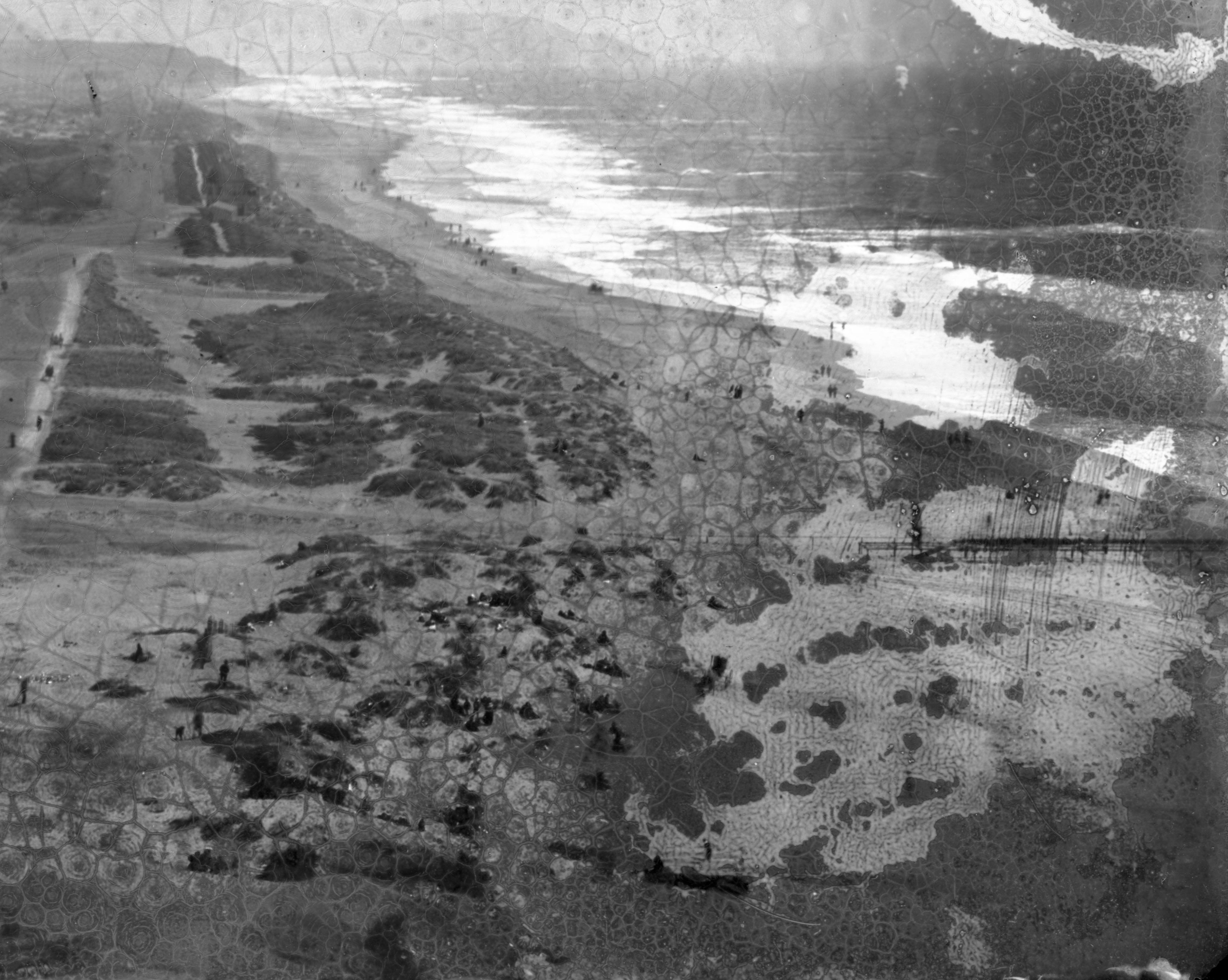


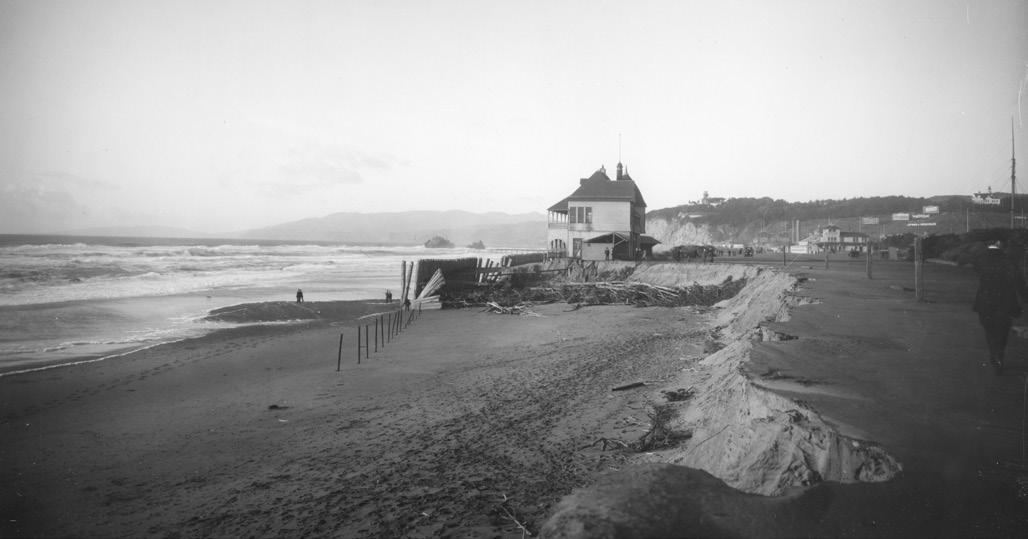
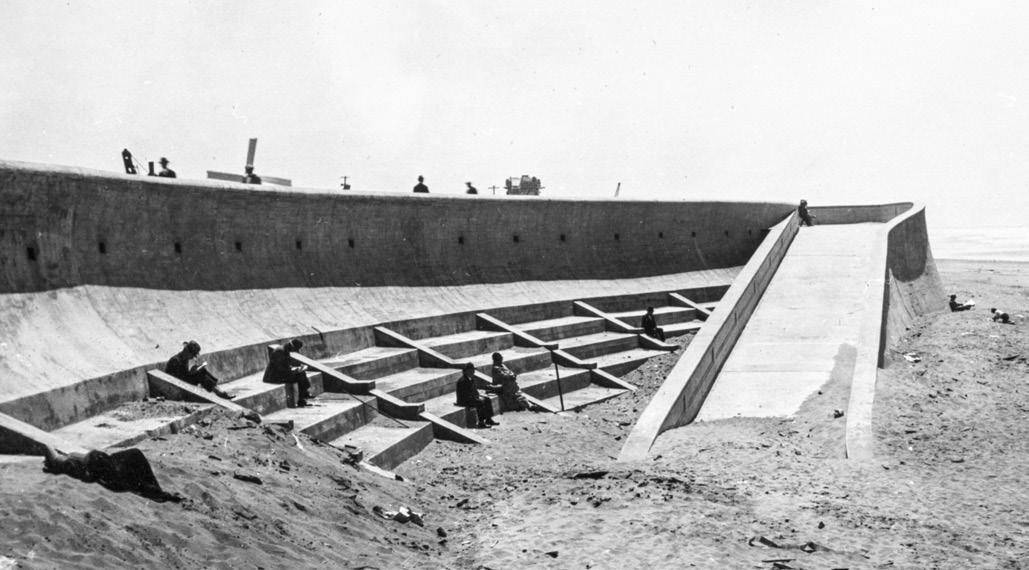
O’Shaughnessy’s plans placed the seawall at 150 feet from the high tide water mark. An engineer hired by the ParkRichmond Improvement Club, however, filed a report that the seawall was too close and should be set back 300 feet. The city noted that if the beach was 300 feet wide, there would be insufficient room for the road next to it and they would have to buy beachfront properties to make up for the lost space. Beachfront property owners were not having that, so the city won that battle. Work commenced per O’Shaughnessy’s plans and continued through much of 1916. The large seawall included bleacher seats at the bottom for beach patrons to sit on.
Soon after this work began, San Franciscans petitioned to have the esplanade extended even further south. On March 18, 1916, the Recreation League asked city supervisors to extend it to at least the Beach Chalet. The Golden Gate Park Federation of Improvement Clubs then asked for $100,000 to be appropriated for the extension of the esplanade. However, the supervisors only approved an additional $25,000. The extension contract was again awarded to J.D. Hannah, even though he was not the lowest bidder. He got the contract because his company had proven to be a responsible contractor during the first part of the construction.
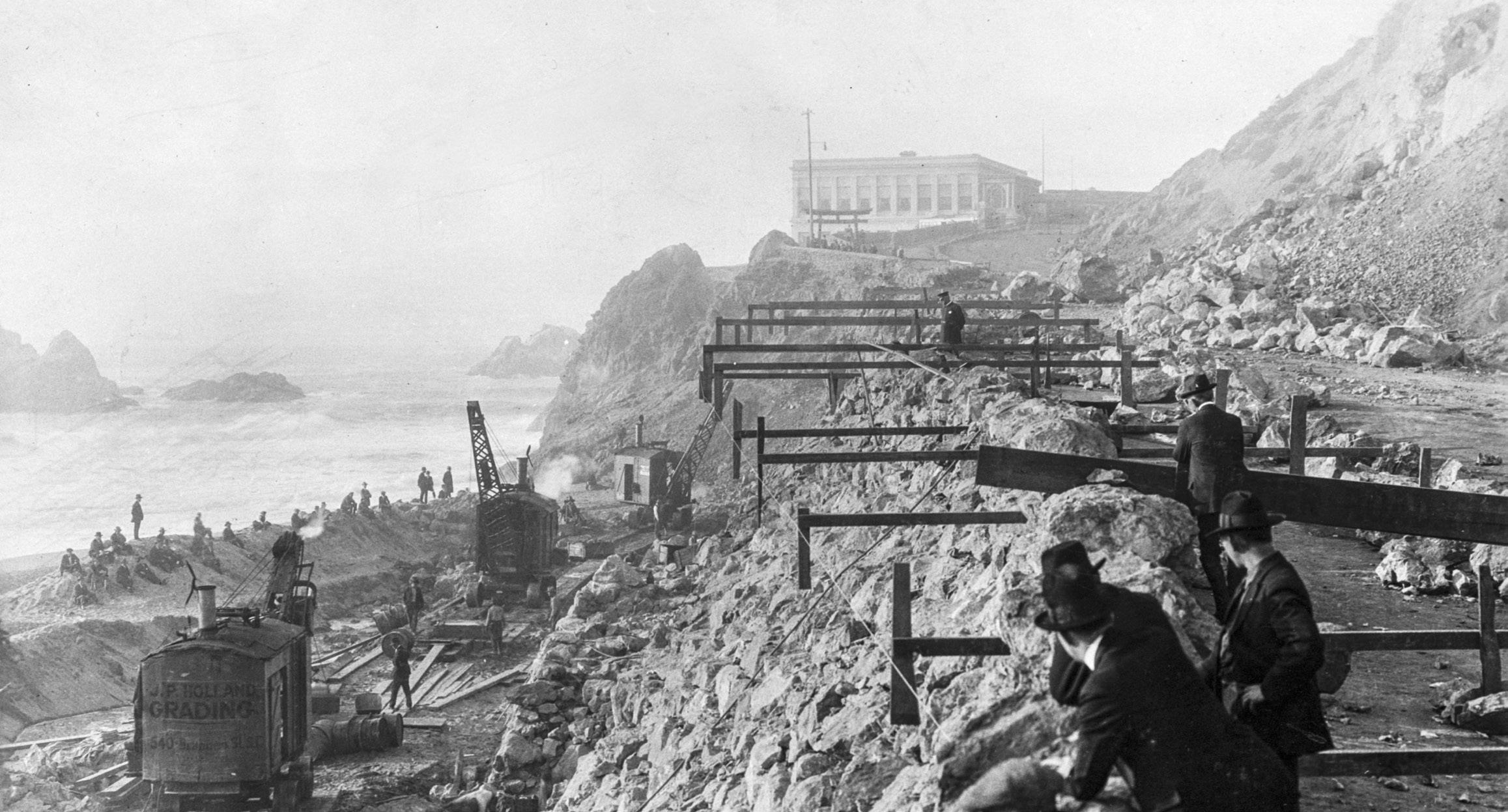
The completion of the first part of the esplanade work – about 1,500 feet in length – was announced by O’Shaughnessy on November 10, 1916. From there, Golden Gate Park Superintendent John McLaren took over, to do landscaping work. When McLaren was done, a large dedication ceremony was held on April 29, 1917. With World War I raging half a world away, the speeches of Mayor James “Sunny Jim” Rolph and others at the ceremony tended toward the patriotic. Rolph urged everyone to “do our bit.”2
Mere weeks after the dedication, city budget cuts forced the Board of Supervisors’ Finance Committee to eliminate further appropriations for esplanade construction. Improvement clubs and newspapers repeatedly called for the esplanade work to continue, but the city would not budge, even when it received $392,000 from Southern Pacific Railroad as part of a land exchange. This and other cuts allowed the city to avoid reducing a payroll that some called bloated. It took two years of newspaper editorials and public calls for monies to extend the esplanade before the city finally caved in. The Board of Public Works appropriated $85,000 on March 19, 1919, but with one minor curveball. The money was not for extension of the esplanade,but for paving the entire length of Great Highway. A contract for the paving project was awarded by the end of April 1919. Work commenced, shutting down Great Highway for two months. This work was also criticized for being insufficient to bear heavy traffic.
The city signed a deal in March 1920 with contractor John Spargo to build a “public comfort station,” a.k.a. restroom, by the esplanade.3 This was completed, but money earmarked for esplanade extension and Point Lobos Avenue improvements was redirected. City supervisors voted in November 1920 to instead use that money to improve Laguna Honda Boulevard.
In March 1921, the city approved the construction of a wooden boardwalk that would extend from Sloat Boulevard north to Lincoln Way, on the beach side of the Great Highway. The contract was awarded to the Hanna Brothers, but again, the city did this on the cheap. Only $15,000 was appropriated for the work, which meant the boardwalk would only extend as far north as the money lasted. It’s unknown how much of the boardwalk was completed.

Supervisors made a bigger push forward when they set aside $150,000 in the 1921-22 budget for extension of the esplanade. Mayor Rolph signed off on this budget on June 7, 1921. The Clinton Construction Company was the lowest bidder for the work and was awarded the contract at a Board of Public Works meeting on August 19, 1921. Work on the esplanade extension began before the end of the year.
Concurrent with the extension work, San Francisco also widened and paved Point Lobos Avenue. This short stretch of road runs west from 42nd Avenue, curving to the south below Sutro Heights before uniting with Great Highway at Balboa Street. It was very popular since it provided access to the Cliff House, Sutro Baths, and other small shops and concessions. However, it was still a dirt road at the time, and particularly tricky to travel during the rainy season and occasional rock slides from Sutro Heights. Point Lobos Avenue was declared to be in “deplorable” condition with ditches, holes, and rocks that damaged automobiles.4 With reduced traffic to the Cliff House after Prohibition began, plans were made to widen and pave Point Lobos Avenue to make it safer. This included the construction of a viaduct downhill from the Cliff House, and a seawall near the bottom of the hill, where Point Lobos Avenue meets Great Highway.
When the Point Lobos Avenue makeover was done, a dedication ceremony for both that work and the further portion of the esplanade to Cabrillo Street was held on June 11, 1922. The day before, Mayor Rolph signed the budget for the 1922-23 fiscal year, which included another $150,000 for esplanade work. The contract for the next section, taking it to Fulton Street, went to the Healy-Tibbitts Company on August 23, 1922.
As esplanade construction continued, O’Shaughnessy decided he was through with the work being done piecemeal. He declared that he would not seek funds for further extension in the 1923-24 budget because the city’s “one section at a time” approach was making it more expensive than it should be, and he preferred to wait until the city could afford to make a large appropriation for the whole project. O’Shaughnessy’s recommendation remained the same the following year. So, just like seven years before, work on the Ocean Beach esplanade came to a halt. At this point, it stretched from Point Lobos Avenue to Fulton Street, near the original Beach Chalet, which was then on the west side of Great Highway.
The Beach Chalet was an impediment to further construction, as it lay in the path of the seawall. However, shifting sand dunes and tides also threatened the building, so in 1925, a new Beach Chalet was designed by famed architect Willis Polk and built directly across Great Highway from the original. It cost $75,000 and was Polk’s last project. The ground floor featured restrooms, changing rooms, and a lunch counter, while the upstairs had a 200-seat restaurant. Instead of demolishing the old structure, it was donated to the Boy Scouts. Park Commissioner Herbert Fleishhacker funded its relocation in the spring of 1925.
In the November 8, 1927 election, voters passed a $9 million boulevard bond. City supervisors decided to use $1 million from that fund to widen and beautify Great Highway. They proposed a 400-foot-wide recreation strip along the entire Sunset District shoreline that would consist of a pair of roadways with a median, and a continuously-landscaped lawn with a walkway and bridle path on the east side of the road. The lawn was broken up by planting beds for shrubs; McLaren did the landscaping.
The plan included pedestrian underpass tunnels providing beach access at Fulton, Judah, Taraval, and Wawona Streets – all intersections with a streetcar terminus nearby. Restrooms were added aboveground at Judah and Taraval and underground at Fulton. An equestrian ramp to the beach was also constructed at Fulton. A third road – today’s Lower Great Highway, east of the berm – was built and used as a service road for the main highway, where trucks and slow-moving traffic could travel. The main roadway was lined with electric lights, and traffic signals were installed for high-use times along Lower Great Highway.
The Great Highway project also provided for a seawall along the entire highway to Sloat Boulevard, where Fleishhacker Pool and Playground had recently been completed. Although there was further seawall construction, the dream of one running the entire length of Ocean Beach never came to fruition. It never extended further south than Lincoln Way.
The entire project was completed over the course of two years. On June 10, 1929, yet another dedication ceremony was held at the end of Lincoln Way. Over 50,000 people attended. In his remarks, Mayor Rolph praised the “genius and foresight” of O’Shaughnessy and McLaren.5 The day’s events included a marathon, swimming races at Fleishhacker Pool, a parade, a horse procession, and a band comprised of over 1,000 members. California Governor C.C. Young’s 15-year-old daughter Lucy cut the ceremonial ribbon to officially open the road.
This marked the end of the 15-year stop and start project to tame the Ocean Beach waterfront. Plans to extend the seawall the entire length of the beach were abandoned, possibly due to the Great Depression. Not all of the completed work was on solid foundation though. “A full moon and freak tide” in early April 1931 washed away the sand foundation for the Taraval underpass steps.6 The steps dropped three feet, which tore a six-inch rift in the cement wing from the tunnel to the beach. Damages were estimated at $5,000 and repairs required sinking concrete cylinders into the sand as a new foundation for the steps.
Severe storms in 1939 and 1940 caused more damage to Great Highway in a large swath of area around Taraval, including the pedestrian underpass and a wooden seawall that had been built to protect the underpass. Repairs were done by C.W. Caletti, who submitted a low bid of $67,675 in February to win the contract. Over time, sand buried both the seawall at Taraval and the bleacher seats at the bottom of the seawall at the north end of the beach. All three pedestrian underpasses were eventually closed.

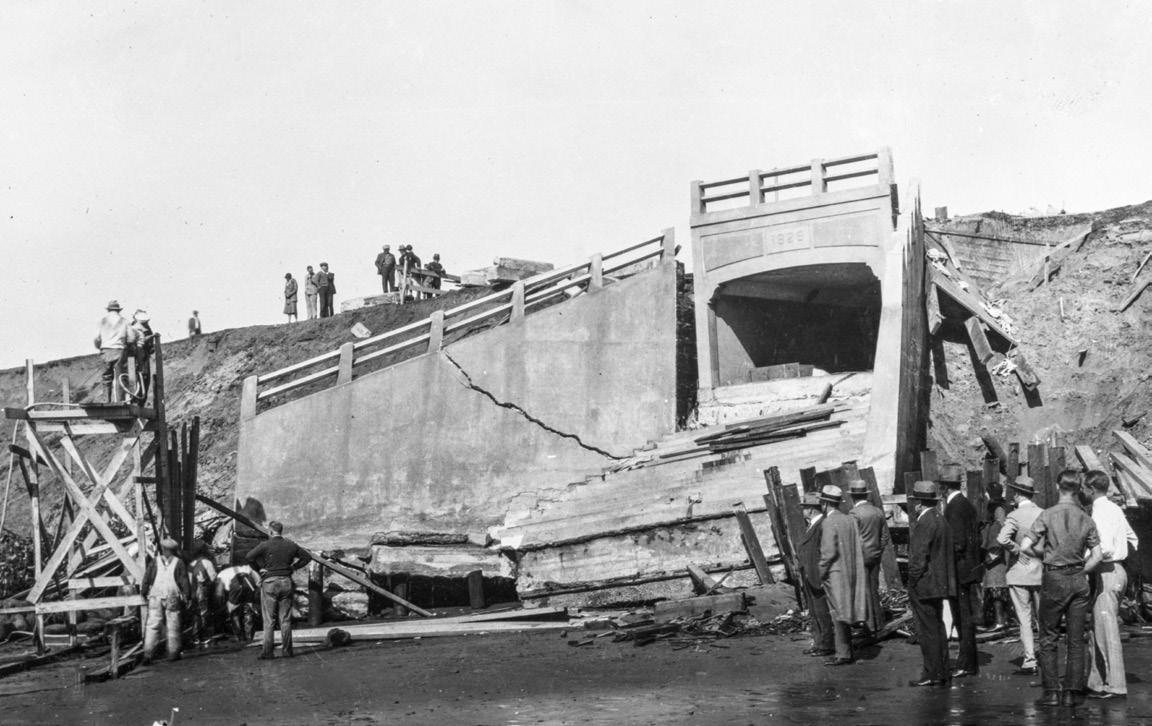
Despite all the efforts over the years to tame the beach, nature finds a way. Wind continuously blows sand onto the highway. Erosion at the south end of the beach repeatedly closes the southbound lanes. During the COVID-19 pandemic, without workers to clear sand, Great Highway was completely closed south of Lincoln. It was later reopened on weekdays only as a compromise. A November 2022 ballot measure that would have required the city to keep Great Highway open at all times failed. Thus, the cycle of opening and closing Great Highway marches on. Ultimately, we have fought and will continue to fight a seemingly never-ending battle against the raging surf, sand, and wind at Ocean Beach.
1. “Supervisors Favor Beach Esplanade,” San Francisco Chronicle, February 16, 1915.
2. “Beach Esplanade Is Dedicated By Patriotic Crowd,” San Francisco Chronicle, April 30, 1917.
3. “Paving in Sunset District Ordered,” San Francisco Chronicle, March 13, 1920.
4. “Bids for Repair Work on Highway Will Be Opened,” San Francisco Chronicle, September 11, 1921.
5. “Mayor Rolph Dedicates Beach Drive,” San Francisco Chronicle, June 10, 1929.
6. “Freak Tides and Full Moon Play Mean Tricks With Beach Underpass,” San Francisco Chronicle, April 4, 1931.




